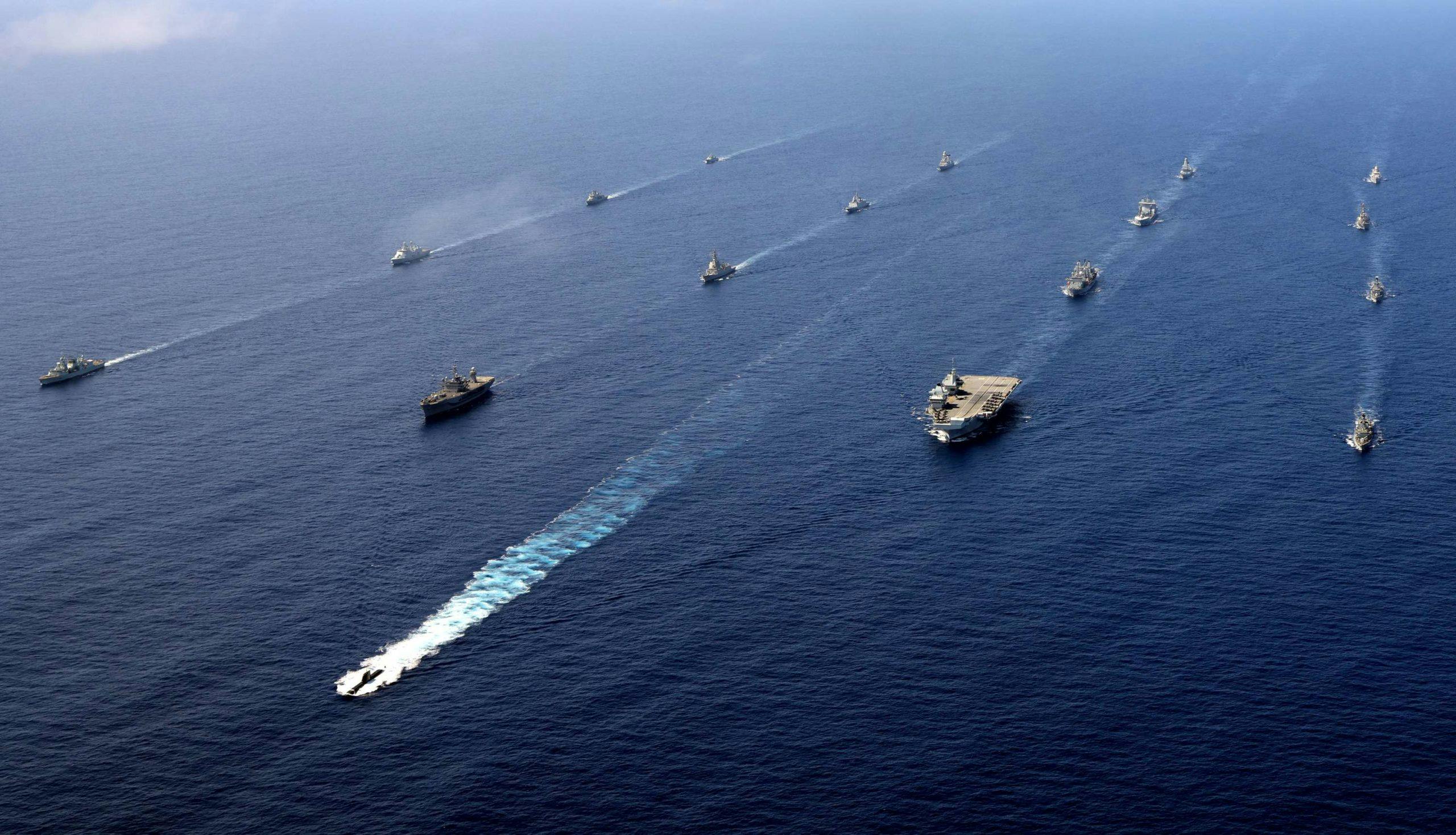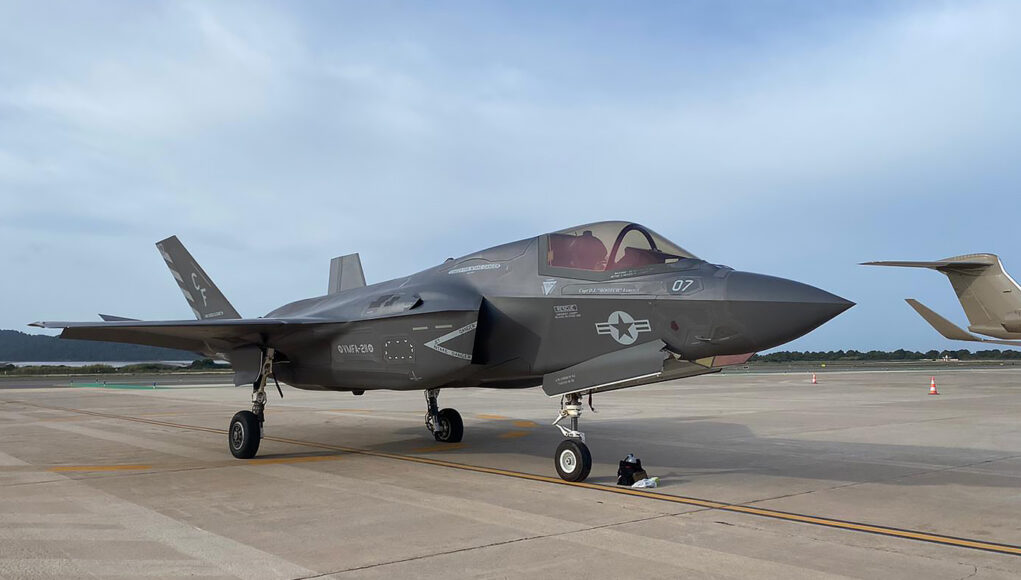An F-35 jet launched from HMS Queen Elizabeth has had to conduct an emergency landing in Ibiza as a precautionary measure.
The aircraft, apparently incorrectly showing as a Dutch F-35 on a popular flight racking website was operating from HMS Queen Elizabeth. The aircraft carrier and her Carrier Strike Group are currently at sea in the area.
Esas fotos son del F35 de Ibiza. Atencion al tren izquierdo, va pinchado. pic.twitter.com/TmFnlpDX08
— Ⓜ️. ©️. 🟥🟨🟨🟥 (@MisterCromer) June 1, 2021
The above image shows what appears to be a punctured tyre but we’re awaiting confirmation on what actually happened.
En el parking lo tenemos sano y salvo. 😊 pic.twitter.com/HdPj2Ahz9u
— Salvi (@theberone) May 31, 2021
Is there cause for concern?
No, not really.
I asked a naval source about this, he told me:
“If it’s literally just the puncture it’s a safety thing. Being cautious with a $150m dollar aircraft. Why land on a small deck when you can a large runway etc. These things happen and will again. The jet is down safely. That’s the main thing. If I had to make a guess, a merlin will fly out with parts/engineers and fix the issue so can rejoin the ship. Not the first time won’t be the last.”
The commentator added:
“But we can see the jet is intact, the wheel is punctured. It may not be the puncture that’s caused the diversion and that could have happened on landing. Pilots will know where the local airports are re having to divert. And as said it’s much safer to land at a large runway with all the facilities and emergency services if you have a sniff of a incident. They made the right call.”
What is the Carrier Strike Group doing?
HMS Queen Elizabeth is the deployed flag ship for Carrier Strike Group 21 (CSG21), a deployment that will see the ship and her escorts sail to the Asia-Pacific and back.
CSG21 will see the ship along with the Strike Group work with over 40 countries from around the world. The Strike Group will operate and exercise with other countries Navies and Air Forces during the 7 month deployment.

The Strike Group includes ships from the United States Navy, the Dutch Navy, and Marines from the US Marine Corps. As well as British Frigates, Destroyers two RFA supply ships and air assets from 617 Sqn, 820 NAS, 815 NAS and 845 NAS.
This is the largest deployment of Fifth Generation Fighter Jets at sea in history.














Sensible precaution. Not as embarrassing as the “lost” Sea Harrier that landed on a Spanish container ship!
that was legendary. It found its way back to Yeovilton safely to fly another day!
Yup, and now at Newark Air Museum…..
I’m not sure why ‘plane lands safely at an airport’ is embarrassing to anyone?
Every single plane with a sane pilot has diverts for all kinds of things.
‘Plane crashes and is written off due to skidding on deck’, that would be embarrassing. Very.
Good call by all. As all that is left is a fixable problem.
Glad went well, I am sure the pilot will get a ribbing that he just wanted to go there to party v’s return to the carrier. 😀 Do we know if it did a vertical landing or a short field/normal landing?
Where would they get a spare tyre from? Are they a NATO standardised item?
would they need special jacks or equipment to lift it – presumably yes. I guess they have field/expeditionary equipment available
Just change it in the hover!
In the boot? Or do they have one of those compressor thingies. When will the AA turn up?
on topic – If it’s mechanical it will surely take some time to get parts and mechanics there.
As the article indicated it is likely to be flown in from the carrier by Merlin along with USMC engineers and the tools required for the job.
Might mean the carrier has to close with the coast or loiter in the area so that the Merlin, in particular, can make the round trip.
The point is if you fly any aircraft long enough you will have some kind of incident. It is the natue of machines. When I was flying I had to declare one urgency and one emergency, both for a spluttering engine – made for good stories in the club house afterwards 🙂
Cheers CR
Morning CR. Did you fly Harriers?
Discount Tires? lol
All the kit and spares they need will be on the carrier. A team will fly out in a Merlin, fix the jet, and off you go. Happened many times during the Harrier day’s. Totally routine.
On a recent programme about the CSG it was said that they had every spare part including a engine for the F-35 So I would think that a merlin was dispatched with the wheel changing crew .
June in Ibiza? Don’t mind if I do! 😅
Reminds me of when the Hawk first went into service, many moons ago. The students reckoned that if you took off with full tanks and did an hours training sortie the furthest divert airfield was Nice. Very tempting I’m sure!
Will they have to quarantine for 14 days on return?
Pretty sure the pilot is fully vaccinated.
There are worse places to divert too, I hope the pilot had their civi’s rolled up in a bag with them and ready to go.
At least he didn’t park it on a containership like in 1983…
Malfunction of the jet exhaust system can necessitate a conventional landing, always a calculated risk
Lucky bastard! Gets to spend some time in Ibiza. Have fun Marine!
Right that’s it, there you go, that proves the carriers should have been been cats and traps, he wouldn’t have to have to divert if the 4th phalanx was fitted (and CAAM) and they are far to big, if we had 4 smaller carriers he would have been ok and I blame the yanks on board, would have been ok if it was just Brit aircraft on board……shall I go on….😂
😅🤣
:wpds_wink:
the puncture was not the cause of divet. suffered a lack of lift control, the puncture was the result of full speed landing.